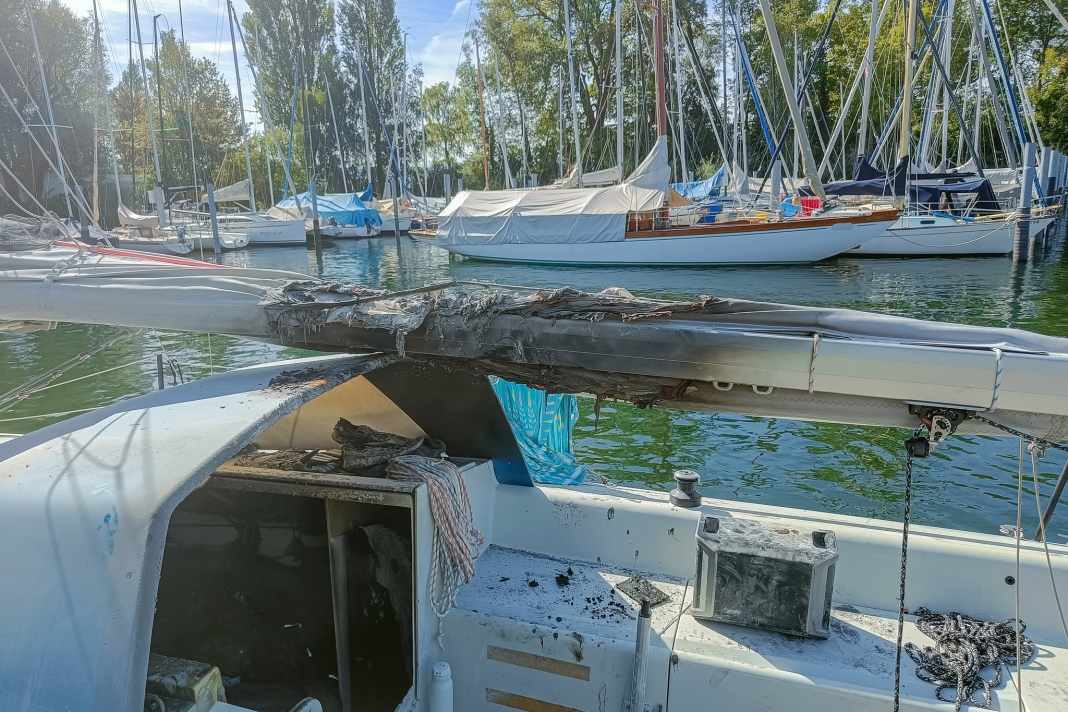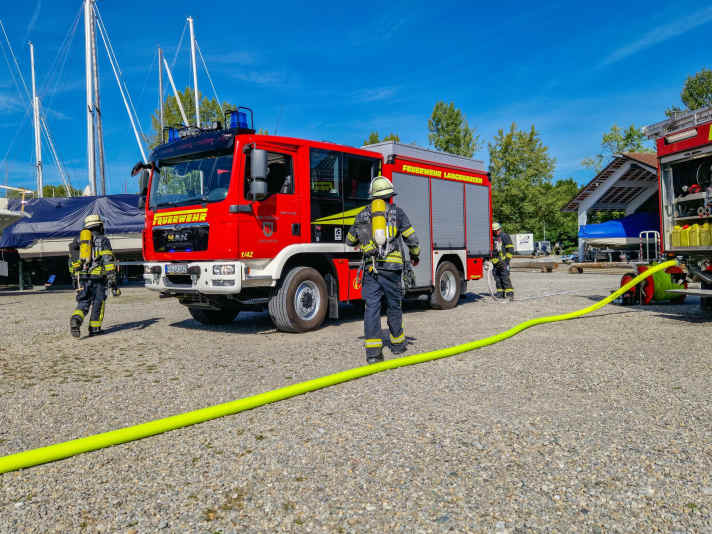





According to the police report, the battery was being charged at 10.50 a.m. last Sunday when it suddenly started to smoke heavily and jet flames came out of the companionway. Two children, aged four and eight, were on board at the time. The parents and several witnesses reacted quickly and rescued them unharmed from the burning boat. The fire was extinguished with several fire extinguishers. However, an explosion slightly injured the children's father. He had also inhaled smoke gas. The emergency services took him to a clinic for observation. The damage is estimated at 8,000 euros.

According to the report, the battery was the permanently installed power supply for an electric drive. However, the photos show a portable power station in the cockpit, which does not appear to have been burnt.
UPDATE: The battery was not permanently installed, as previously erroneously described in the police press release. There was no electrical installation on board the boat. The battery that caught fire belonged to an electric drive and was mobile in the boat. It was charged with an extension cable from the shore power. The power station in the picture is not actually the cause of the fire and was on board to supply power to devices such as smartphones and tablets.
Only recently we Fire extinguisher for lithium battery fires tested. The recommendation of the fire safety experts was to get the crew to safety as quickly as possible, as the fire can easily get out of control and the fumes are extremely toxic. Holger Flint from insurer Pantaenius identified faulty charging technology as a particularly common cause of burning batteries. The fact that the accident at Lake Constance involved a lithium iron phosphate battery is surprising, as this technology is considered to be very safe. However, if the charger does not switch off when the battery is fully charged, even this cell chemistry does not offer complete protection against fire. Incidentally, this applies to all battery types, including lead-acid batteries.
